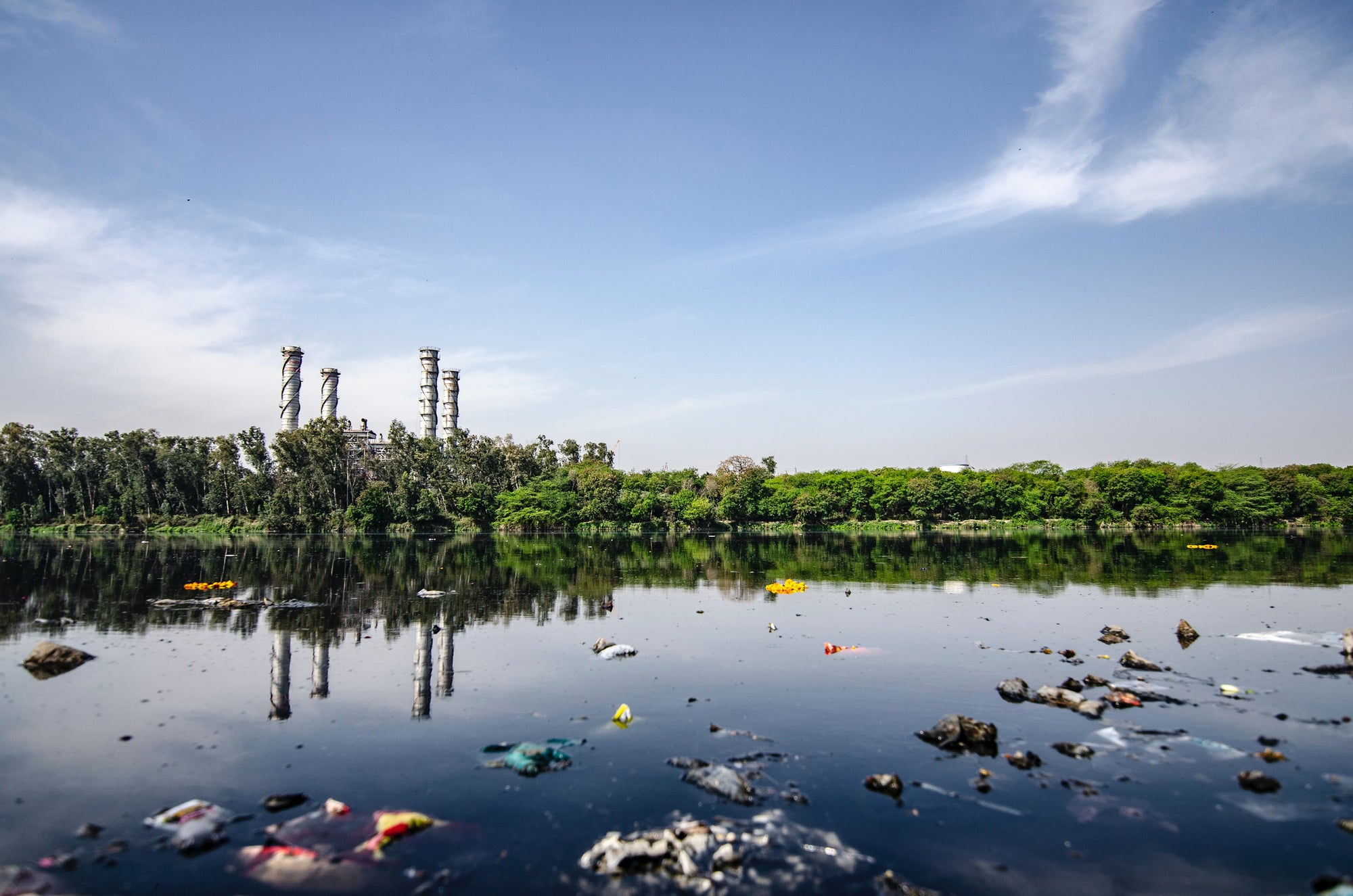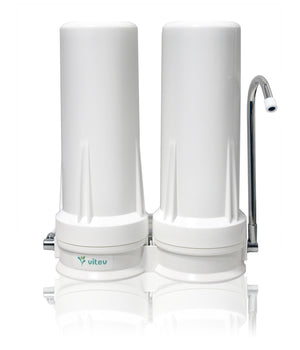
It’s easy to see why confidence in the quality & safety of tap water is decreasing. We’ve all heard the alarming stories about tap water chemicals, like the presence of lead in Flint, Michigan. But did you know that lead and other harmful contaminants are prevalent in tap water all over the country? The contaminants below are the most dangerous found in tap water, due to their toxic effects and widespread presence.
Chlorine & Chloramine
Both are disinfectants added to the water supply to reduce microorganisms like bacteria and viruses. However, they react with naturally present organic matter in water (like decaying leaves), creating harmful disinfection by-products (DBPs). DBPs are considered to be 10,000x more toxic than chlorine, and studies have linked DBPs to cancer, issues during pregnancy (including miscarriage), and a wide range of long-term health effects.The use of chloramine is gradually overtaking chlorine because chloramine lasts longer and performs better for local water departments. But it stays in the water longer and is much harder to filter, so it’s worse for those drinking the water.
Does your city use chlorine or chloramine? You can view the list for yourself here.
Lead
Lead is seeped into the water supply through aging infrastructure and ancient pipes, some of which are 80-100+ years old. Lead poisoning causes blood disorders and damage to the brain, kidney and bones, as well as a frighteningly long list of other serious medical conditions you can view here. Lead is particularly harmful to young children, causing irreversible brain damage, lowered IQ and developmental disorders. The Institute for Health Metrics and Evaluation estimated that long-term effects of lead exposure accounted for 853,000 deaths in 2013. There is no known level of lead exposure that is considered safe.Chromium-6
Never heard of chromium-6? It is the carcinogenic chemical made famous by the true story of ‘Erin Brockovich.’ The Environmental Working Group (EWG) released an alarming report on chromium-6 in September 2016, which you can view in its entirety here. Based on nationwide EPA tests from 2013-2015, EWG estimates that water supplies serving 218 million Americans contain unsafe levels of chromium-6. EWG also estimates that chromium-6 will cause more than 12,000 excess cases of cancer by the end of century, if left untreated.Fluoride
The most controversial chemical in water, fluoride has been added to public water supplies since the middle of the 20th century for reasonsHow can we avoid these damaging chemicals, and countless others, that are contaminating so many public water systems?
Bottled water: The bottled water market is rapidly growing, with close to 11 billion gallons of water being sold in the USA in 2014. Drinking bottled water is extremely wasteful, and incredibly expensive when the cost of those single bottles or packs is added up. The average cost of the 11 billion gallons was $1.20/gallon, which is 300x the cost of tap water, according to the American Water Works Association. However, the average price of $1.20 includes wholesale orders. Approximately 2/3s of all bottled water sales are retail single (500 mL) bottles, with an average cost of $8.00 per gallon.
Reverse Osmosis/Water Distiller: These are high-end filtration systems used in the home, which successfully filter out the large majority of chemicals from tap water. However, they also filter out the necessary minerals in water. Aside from losing out on dietary minerals like magnesium and calcium, there are numerous adverse health effects of drinking demineralized water. We need proper mineral concentrations in drinking water in order to effectively hydrate our cells. Keep in mind that many types of bottled waters use RO or distillation to filter the water. These systems are also inefficient, producing significant waste water.
Vitev Flo+: Until now, the only residential filtration systems capable of removing these contaminants (and more) were reverse osmosis and distillation systems. Not anymore. The Flo+ ceramic carbon filter is designed to provide the highest quality water possible from a single cartridge block filter. The filter is a matrix comprised of 2+ types of activated carbon in block form combined with zeolite minerals, structurally bound with polymers into a highly porous block filter. The ceramic shell is made of diatomaceous earth, which eliminates bacteria and cysts. You can view the consistent contaminant reduction rates provided by the Vitev Flo+ here. Name a tap water chemical, and the FLO+ has you covered. Unlike RO systems and distillers, the source minerals are not removed. In fact, the proprietary Vitev mineral mix is included with the Flo+ to naturally mineralize the water for optimal hydration. The Flo+ can be installed as either a countertop or under-sink filtration system to fit your needs. The cost to own and use the Flo+ is only $0.09 per liter.
Ask a Vitev hydration expert today how you can hydrate safely with the Flo+. Call us at 1-855-456-9220 for a Free consultation.





Comment
Memphis Tennessee has always been proud of its drinking water as it is good tasting and been filtered out naturally by the sands I just noticed that we’re my bathtub faucet drips there has a black spot underneath it and it is where the water has eaten the enamel off of my bathtub and I am sure that if it has the capacity to eat enamel off a 75 year old bathtub that has never had any problems like this I’m sure that same water will do damage to our organs are pets organs and parties are going to be melted away by whatever is in the water I have emailed channel 3 news and left them a note notification of what the water has done to my bathtub I’m going to be taking pictures and I will pursue this until I get the right answers